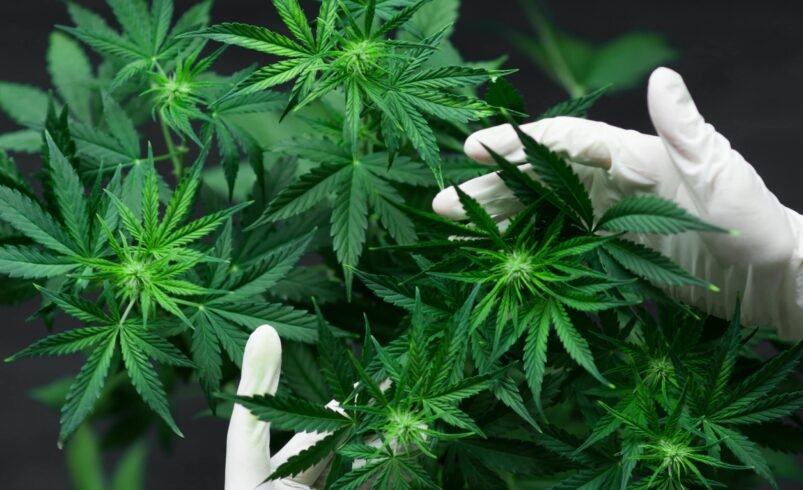Cannabis Genetics: Why Your Seed Choice Matters More Than You Think

The seeds chosen for a cannabis grow determine outcomes before a single leaf appears. Someone can set up perfect growing conditions, maintain ideal temperature and humidity, provide optimal lighting, and still end up disappointed if the genetics are poor. The reverse is also true—quality genetics can produce decent results even when growing conditions aren’t perfect. This makes seed selection one of the most important decisions in the entire growing process.
Many beginners don’t realize how much genetics matter. They focus on equipment, nutrients, and growing techniques while treating seed choice as an afterthought. Pick whatever sounds good, plant it, and assume things will work out. But genetics dictate plant height, flowering time, yield potential, pest resistance, nutrient needs, and final product quality. These characteristics are locked into the DNA before germination. No amount of care can make poorly bred seeds perform beyond their genetic limits.
Understanding what genetics actually influence and how to identify quality seeds prevents the frustration of investing months of effort into plants that were never going to produce satisfying results. The good news is that quality genetics are available and identifying them isn’t complicated once the key factors are understood.
What Genetics Actually Control
Cannabis genetics determine nearly every significant characteristic of how plants grow and what they produce. Plant structure—whether it grows tall and lanky or short and bushy—comes from genetics. Flowering time—whether it finishes in 8 weeks or needs 14—is genetically determined. Yield potential, resin production, cannabinoid profiles, terpene content, and resistance to pests and diseases all trace back to genetic makeup.
This matters because growers can’t change these fundamental characteristics through growing technique. Someone with limited height who chooses genetics that grow 8 feet tall will struggle regardless of training methods. Someone hoping for fast harvests who picks a 14-week strain will be waiting no matter how perfect the conditions are. Genetics set the parameters. Growing technique determines whether plants reach their genetic potential, but it can’t exceed what DNA allows.
The implications are straightforward. Starting with genetics suited to available conditions and desired outcomes makes success possible. Starting with inappropriate genetics makes success unlikely or impossible. A grower with 5 feet of vertical space needs compact genetics. Someone growing outdoors in a region with short summers needs fast-finishing strains. Someone dealing with high humidity needs mold-resistant varieties. Matching genetics to circumstances matters more than any equipment or technique.
The Seed Quality Problem
Not all cannabis seeds are equal in quality even within the same strain. Poor breeding practices, inadequate selection, or careless handling create seeds with low germination rates, unstable genetics, or traits that don’t match descriptions. These problems waste time and money while producing disappointing results.
Quality seeds come from breeders who stabilize genetics through multiple generations of selective breeding. They test germination rates, ensure genetic consistency, and accurately describe what growers should expect. Reputable seed companies work with established breeders and provide detailed information about genetics, growing characteristics, and expected outcomes.
The challenge is identifying quality seeds when marketing makes everything sound impressive. Every seed company claims superior genetics, high germination rates, and amazing results. Distinguishing genuine quality from marketing requires looking beyond claims to find actual evidence of breeding practices, customer experiences, and company reputation.
Growers ready to start their cultivation journey should prioritize reliable sources when they Buy Cannabis Seeds, focusing on suppliers with established reputations, transparent information about genetics, and consistent positive feedback from experienced growers rather than just lowest prices or flashiest marketing.
Indica, Sativa, and Hybrid Genetics
The traditional indica/sativa classification provides rough guidance about plant structure and effects but oversimplifies complex genetics. Most modern cannabis is hybridized, combining traits from different genetic backgrounds to create desired characteristics.
Indica-dominant genetics tend toward shorter, bushier plants with faster flowering times and more sedative effects. Sativa-dominant genetics often grow taller with longer flowering periods and more energizing effects. Hybrids combine these traits in various ratios, offering middle-ground characteristics or specific trait combinations.
Understanding these broad categories helps with initial selection, but specific strain descriptions matter more than general classifications. Two indica-dominant strains can differ dramatically in height, flowering time, and effects based on their specific genetic makeup. Reading detailed strain information provides better guidance than relying on indica/sativa labels alone.
The key is matching genetic tendencies to growing constraints and desired outcomes. Someone with limited height should favor indica-dominant or compact hybrid genetics. Someone with ample vertical space and long growing seasons can handle taller sativa-dominant plants. Understanding what the space and growing situation can accommodate narrows choices to appropriate options.
Autoflower vs Photoperiod Genetics
Autoflowering and photoperiod genetics represent fundamentally different approaches to plant development. Photoperiod cannabis flowers based on light schedule changes—plants stay in vegetative growth until light hours decrease, triggering flowering. Autoflowers flower based on age regardless of light schedule, typically beginning flower around 3-4 weeks from germination.
This genetic difference affects everything about growing. Autoflowers finish faster—usually 8-12 weeks from seed to harvest. They stay smaller, making them suitable for limited spaces. They require no light schedule changes, simplifying indoor growing. But they typically yield less than photoperiod plants and offer less control over plant size and development.
Photoperiod genetics allow growers to control vegetative time, growing plants as large as space allows before triggering flowering by changing light schedules. This control enables training techniques, larger yields, and better space utilization. But photoperiod plants take longer overall and require more attention to light schedules.
For beginners or limited spaces, autoflowers offer simplicity and speed. For experienced growers with adequate space, photoperiod genetics provide more control and higher yield potential. Neither is universally better—the choice depends on circumstances and priorities.
Feminized Genetics Advantages
Feminized seeds produce female plants with extremely high probability—usually 99% or better. This matters because only female cannabis plants produce the resinous flowers that growers want. Male plants must be identified and removed before they pollinate females, which reduces resin production and creates seeded flowers.
Regular seeds produce roughly 50/50 male and female plants. This means half the seeds germinated produce unwanted males that must be removed. For small grows, losing half the plants to males significantly reduces final yield. Even for larger grows, identifying and removing males creates extra work and risk.
The genetics of feminization don’t inherently affect quality, yield, or potency. Feminized seeds simply eliminate the male/female uncertainty. This makes them preferable for most home growers who want maximum efficiency from limited plant numbers. Regular seeds mainly appeal to breeders who need males for breeding projects or growers who prefer working with traditional genetics.
Understanding this distinction prevents wasting resources on regular seeds when feminized options better serve most growing goals. The slightly higher cost of feminized seeds is usually justified by eliminating the plant loss that comes with regular seeds.
Breeder Reputation and Genetics Stability
Cannabis breeding varies dramatically in quality and ethics. Established breeders with years of work stabilizing genetics produce consistent, reliable seeds. Opportunistic operators repackage whatever genetics they can source and make impressive-sounding claims without proper breeding work. The difference shows in germination rates, genetic stability, and whether plants match descriptions.
Reputable breeders document their work, explain breeding methods, and provide detailed strain information. They test genetics across multiple grows before release. Customer experiences stay consistent—people growing the same strain report similar characteristics. These breeders charge more but deliver what they promise.
Lesser operations offer cheap seeds with suspicious claims, vague strain information, and inconsistent results. Growers report wide variation between plants from the same seed pack. Germination rates disappoint. Promised traits don’t materialize. The lower prices don’t compensate for poor results.
Research before buying means checking breeder histories, reading multiple reviews, and understanding what went into genetics development. This takes time but prevents the disappointment of investing months growing seeds that never had potential to produce quality results.
Making Informed Genetics Choices
Choosing cannabis genetics successfully requires understanding personal growing constraints, researching strain characteristics, identifying quality sources, and matching seeds to realistic circumstances. The process takes more thought than just picking whatever sounds appealing, but the investment in research pays off through better results.
The key questions are: What space is available? What’s the growing method? How much time does flowering require? What height restrictions exist? What’s the experience level? Answering these honestly narrows appropriate genetics to manageable options. From there, quality sources offering well-bred seeds in appropriate categories provide choices likely to succeed.
Genetics won’t guarantee success—growing skill, environmental control, and consistent care all matter. But genetics determine the ceiling of what’s possible. Starting with quality seeds suited to circumstances provides the foundation for everything that follows. Poor genetics guarantee disappointment regardless of other factors. Quality genetics matched to growing reality make success achievable through reasonable care and attention.




